What is Site Preparation?
The term “site preparation” describes the actions taken before an engineer begins their work. The site cleared in preparation for the new building is called the old or unfriendly site. Since the land and structures already there are suitable for the construction work that will soon begin there, site preparation is not required.
Before construction, the site must be prepared by demolishing old buildings, clearing building sites, mapping underground services and wires, doing a site survey and layout, and treating termites. To get a construction site ready, blasting, test drilling, landfilling, leveling, earth-moving, excavating, land drainage, and other types of land preparation. Construction Work on preparing the site is important for any project. Before the main building work begins, a construction site needs to be set up.
There may be a lot of obstacles on the construction site, such as old buildings or structures, big trees, sloping ground, loose soil, and underground services. It could cause problems when building. For construction projects to go smoothly, the site must be ready for the building before work can begin.
Types of Site Preparation:
1. Soil Testing and Report investigation:
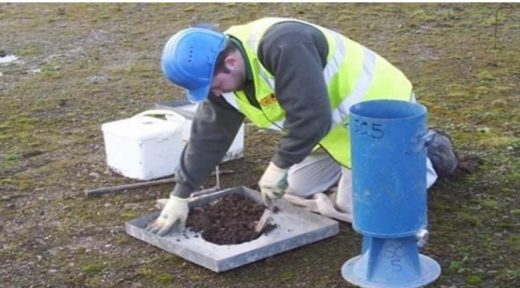
Fig 1: Soil Testing
Courtesy: familyhandyman.com
Before planning and designing any building project, the soil must be tested. Without knowing the nature of the soil, it is impossible to design anything. Soil geotechnical research is done to learn about soil properties, the different types of soil, and how much weight it can hold. So, the people who design buildings can decide if the soil needs any treatment to make it stronger or not.
In geotechnical reports, which come from soil testing, a lot of information about the right type of foundation for the site, settlements and what to do about them, liquefaction, slope stability, groundwater level, soil bearing capacity, excavation-related dangers, soil strength, soil classification, and more.
This soil investing teaches us a lot about how soil works and how it will act in the future. If the construction site is near an area prone to earthquakes, the geotechnical report should include the tests and suggestions needed.
2. Demolition of Old Building:
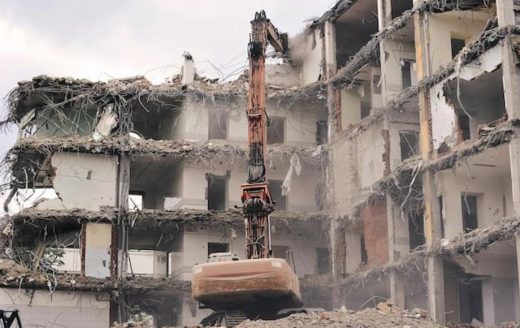
Fig 2: Demolition of Old Building
Courtesy: freepik.com
For building site preparation, the old design needs to be torn down. If there is an old design, come up with a plan to crush it with the help of the crush team. You can start building your site once the land has gaped and the base has been checked.
Cracks should be properly repaired, so they don’t damage other building sections. At this stage, a structural engineer or other qualified professional may be needed to watch for any movement or cracking. Systematic planning and work will, without a doubt, help figure out the best ways to find hazards, ensure materials are thrown away safely and meet legal requirements.
3. Underground Utility Mapping:
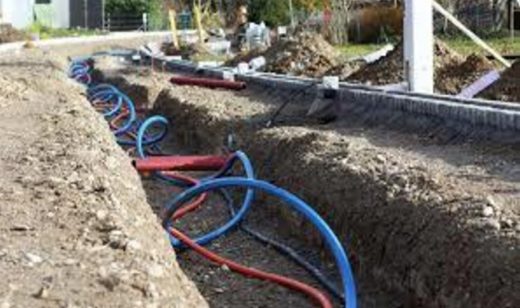
Fig 3: Underground Utility Mapping
Courtesy: usradar.com
Care must be taken when excavating and preparing a construction site in metropolitan areas close to a telecom service or a railway line to ensure no service lines or underground wires are damaged. Therefore, before beginning any building excavation, it is prudent to undertake an advance survey of underground assets or cables running below the ground.
Communicate with the people in charge of electricity, natural gas, and telephones in your building about your workspace by penning a letter. When they get your letter, they’ll check to see if any subsurface service assets are present at your business. If they discover any wires beneath your work area, they will relocate them to another spot to prevent potential damage.
4. Site Survey and Layout:
It’s time to mark out where the building should go. With clearly marked survey pegs or physical markers, a surveyor can find the boundaries of the new building. Land surveys, which set property lines and figure out the size of a piece of land, are complemented by engineering and informational surveys. The engineering survey ensures the structure is built in the right place and as planned. The second survey helps get information about the area’s topography, drainage, and man-made features.
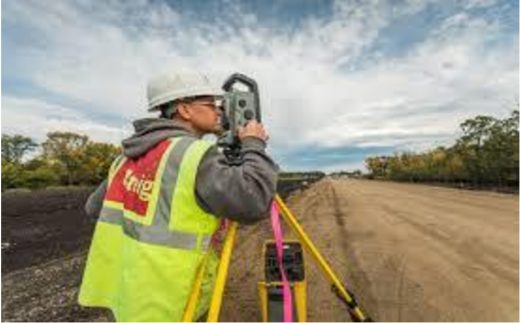
Fig 4: Sit Survey and Layout
Courtesy: ulteig.com
Remember that a construction site changes as the project goes on. A site plan design is important to know where the new building will go, where the access roads for construction vehicles will be, where the storage areas for supplies will be, where the drainage systems will be, etc. Now that you have a map of the site in hand, you know which area needs to be cleared of plants and rocks.
5. Site Clearing:
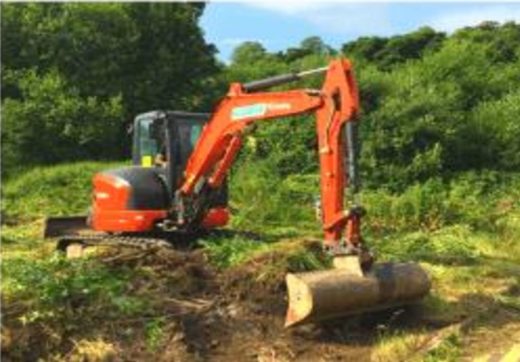
Fig 5: Site Clearance
Courtesy: 9to5civil.com
To get a construction site ready, everything from the ground up, including any timber, underbrush, trees, and rocks, must be cleared out to within three meters of the intended construction area. If the topsoil is not of sufficient quality for the building, it is dug up and replaced with something more suited. The area needs to be leveled out to look smooth and flat.
6. Site Excavation and Earthwork:
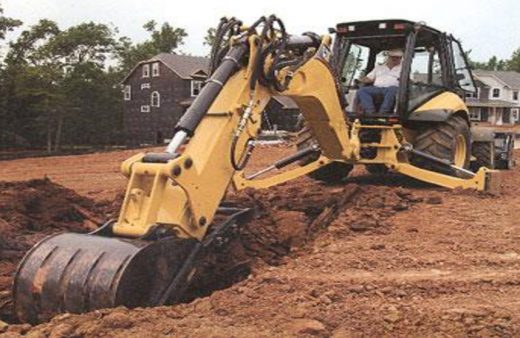
Fig 6: Site Excavation and Earthwork
Courtesy: planningengineer.net
There are two different ways to excavate. The first is known as bulk excavation. It is digging to make a flat spot for the building. Footing excavation is the second type of excavation. When digging footings, remember that the ground can’t have any mud, loose dirt, or tree roots. You might need to build a level platform if the site is sloped. There are many ways to do this, such as “cut and fill” and “split level.”
In cut-and-fill, you remove dirt from a higher part of the land and put it on a lower part of the site. If the material on the site has been deemed unsuitable for use as fill, you will need to think of other ways to get the job done. A split level is another method that is often used. It is thought to be better for slopes and to keep the ecological balance of the soil.
If the slope is steep, you might need a bulldozer to level the building area, or you could choose a different method that fits the needs of your project. Installing surface drains is a good way to get rid of water on sloped sites. Before digging, it’s important to ensure that the crew and heavy equipment can easily get in and out of the area. Site excavation might be easy in places far from people, but it could be hard and complicated in cities and places with lots of people.
7. Construction Project Site Compaction:
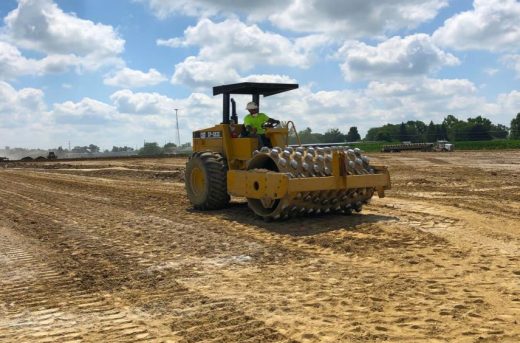
Fig 7: Compaction of Soil
Courtesy: planningengineer.net
According to the International Building (IBC) Code, the soil near the foundation must be improved to the required rank, which is 90% of approximate dry solidity. Soil compaction at the foundation’s footing is crucial for preventing settlement and pushing back against undesirable occurrences. It was important to reduce the size of the land area by decreasing the earth since the foundation’s base increased the soil’s shear force and made the soil porous and flexible.
Soil can be compacted using various techniques, such as tamping, rolling, and vibration. You can find many tools and machines at construction sites, including smooth wheel rollers, sheep foot rollers, rubber tires, crawlers, and tamping plate compactors.
8. Anti-Termite Treatment:
Termite treatment is essential for building construction. Termites eat wood and other cellulose products, but their main food is wood. Termites can get into walls through holes, cracks in concrete slabs, and spaces in walls or floors. Check the details of nearby sites to show that termite risk management is needed at your site.
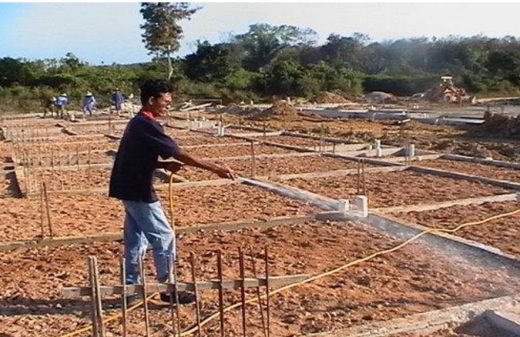
Fig 8: Ant-Termite Treatment
Courtesy: pestcontrolchandigarh.in
9. Start the Construction Process:
After completing all the tasks for preparing the construction site, we can move on to the main building work. Preparing the site is an important job requiring specialized skills to safely and correctly.
Construction Site Checklist:
- Please advise your family and friends to enter the construction area cautiously and only when required.
- Keeping kids and animals out of the construction zone and away from any hazards is important.
- Update your home insurance policy as recommended by your insurance agent.
- Your renovation project into your current insurance coverage.
- Educate the Production Manager on the operation of the sprinkler system and the security system.
- Get in touch with the Production Supervisor and let them know which restrooms the workers can use.
- Move all furniture and other items out of the work area. Clear everything off the walls, shelves, cabinets, and counters, and put away any items that are important to you or can’t be replaced.
- Make that the construction site and any surrounding places (such as those housing utilities) can be easily accessed.
- Clear the outside areas so there is enough room for construction work and storing materials and tools. It could also include your driveway and garage.
- Do away with any bushes, flowers, or other plants you intend to replace.
- Put a label on everything you want to keep that can be used again. Everything else that can be recycled, reused, or disposed of correctly will be.
- Cover or remove furniture from the construction area to protect furniture and other items from dust or other damage.
- Close the doors to other rooms and vacuum often to stop dust from getting into other rooms.
Conclusion:
Site preparation is an important step that requires specialized skills to be done safely and correctly. When the site is set up correctly, everything else is easy. Site preparation will help engineers to dig if a structure has many underground pipes or is built on sewers. It will prevent underground pipes from bursting in the future.
References:
1. Rajibi, Wani. “(DOC) METHODOLOGY OF SITE PREPARATION | Wani Rajibi – Academia.Edu.” (DOC) METHODOLOGY OF SITE PREPARATION | Wani Rajibi – Academia.Edu, www.academia.edu/36567079/METHODOLOGY_OF_SITE_PREPARATION. Accessed 27 Sept. 2022.
2. Asanduff, and sukriti. “Site Preparation of Building Construction Project | Site Preparation Cost.” Asanduff Group, 5 June 2019, www.asanduff.com/site-preparation-building-construction-project.
3. Adam. “Steps in Site Preparation for Construction Projects – Back to Basics.” Back to Basics, 26 Sept. 2019, backtobasics.edu.au/2019/09/steps-in-site-preparation-for-construction-projects.
4. Dobson, Angie. “What Is Site Preparation? 7 Tips to Get You Started.” What Is Site Preparation? 7 Tips to Get You Started., info.fbibuildings.com/blog/site-preparation. Accessed 27 Sept. 2022.
5. “Site Preparation.” Site Preparation – Designing Buildings, www.designingbuildings.co.uk/wiki/Site_preparation. Accessed 27 Sept. 2022. www.asanduff.com/site-preparation-building-construction-project/
6. Homelockers, and View all posts by homelockers ? “Site Preparation: Step By Step Process – Homelockers Construction.” Home Lockers Construction and Development, 16 Aug. 2018, homelockers.com.ph/blog/site-preparation-step-step-process.
If you have a query, you can ask a question here.


